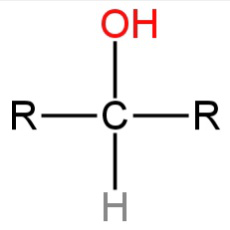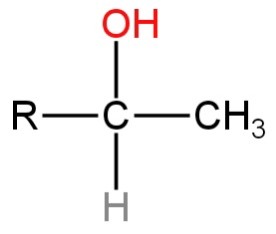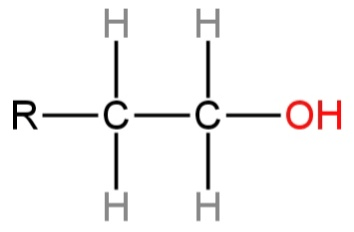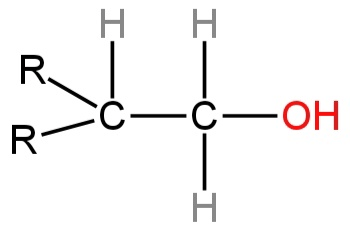
Product A in the following reaction is

A.

B.

C.

D.

Answer
220.2k+ views
Hint: C2H4O is ethylene oxide. It is an epoxide. Epoxides are ethers having the oxygen atom in a three-membered ring. Epoxides are also called oxiranes. RMgI i.e, alkyl magnesium iodide called Grignard's reagent.
Complete Step by Step Solution:
- Ethylene oxide is a strained ring, it readily undergoes several additional reactions which result in ring-opening.
- RMgI is an organometallic compound. An organometallic compound is defined as a compound that contains a direct carbon-metal bond.
- RMgX is Grignard's reagent. It is prepared by the action of alkyl halides on magnesium metal in the presence of dry ether.
- The C-Mg bond in Grignard reagents is polar. The carbon atom is additionally electronegative than magnesium.
- The electrons of the C-Mg bond are attracted to the carbon atom. So, the carbon atom is partially negatively charged, and the magnesium atom has a partial positive charge.
- The alkyl groups in Grignard reagents are electron-rich and can work as nucleophiles.
- These alkyl groups would strike polar molecules at the area of insufficient electron density. Thus, Grignard reagents typically undergo nucleophilic substitution and nucleophilic addition reactions.
- In ethylene oxide, on the other hand, oxygen is much more electronegative than carbon or hydrogen.
- The C-O and O-H bonds are all polar. Grignard reagents are powerful nucleophiles and can react with the carbon atom of epoxides. The reaction results in ring-opening and the formation of alcohol.
This reaction happens in two steps.
Step-1
The attack of the RMgI on ethylene oxide leads to the formation of an additional product that is unstable.

Image: Formation of additional products.
Step-2
The additional product undergoes hydrolysis to form alcohol.

So, ethylene oxide in reaction with RMgI forms primary alcohol.
So, option A is correct.
Note: It must be noted that the ease of reaction of epoxide with RMgI increases with the increase in the ionic character of the C-Mg bond. In the preparation of Grignard reagents, a solution of the alkyl halide is dipped in dry ether into the reaction flask comprising magnesium ribbon suspended in dry ether. Dry ether is utilised as moisture may react with Grignard's reagent to form alkane. Thus, moisture or impurities discourage the yield of Grignard's reagent.
Complete Step by Step Solution:
- Ethylene oxide is a strained ring, it readily undergoes several additional reactions which result in ring-opening.
- RMgI is an organometallic compound. An organometallic compound is defined as a compound that contains a direct carbon-metal bond.
- RMgX is Grignard's reagent. It is prepared by the action of alkyl halides on magnesium metal in the presence of dry ether.
- The C-Mg bond in Grignard reagents is polar. The carbon atom is additionally electronegative than magnesium.
- The electrons of the C-Mg bond are attracted to the carbon atom. So, the carbon atom is partially negatively charged, and the magnesium atom has a partial positive charge.
- The alkyl groups in Grignard reagents are electron-rich and can work as nucleophiles.
- These alkyl groups would strike polar molecules at the area of insufficient electron density. Thus, Grignard reagents typically undergo nucleophilic substitution and nucleophilic addition reactions.
- In ethylene oxide, on the other hand, oxygen is much more electronegative than carbon or hydrogen.
- The C-O and O-H bonds are all polar. Grignard reagents are powerful nucleophiles and can react with the carbon atom of epoxides. The reaction results in ring-opening and the formation of alcohol.
This reaction happens in two steps.
Step-1
The attack of the RMgI on ethylene oxide leads to the formation of an additional product that is unstable.

Image: Formation of additional products.
Step-2
The additional product undergoes hydrolysis to form alcohol.

So, ethylene oxide in reaction with RMgI forms primary alcohol.
So, option A is correct.
Note: It must be noted that the ease of reaction of epoxide with RMgI increases with the increase in the ionic character of the C-Mg bond. In the preparation of Grignard reagents, a solution of the alkyl halide is dipped in dry ether into the reaction flask comprising magnesium ribbon suspended in dry ether. Dry ether is utilised as moisture may react with Grignard's reagent to form alkane. Thus, moisture or impurities discourage the yield of Grignard's reagent.
Recently Updated Pages
The hybridization and shape of NH2 ion are a sp2 and class 11 chemistry JEE_Main

What is the pH of 001 M solution of HCl a 1 b 10 c class 11 chemistry JEE_Main

Aromatization of nhexane gives A Benzene B Toluene class 11 chemistry JEE_Main

Show how you will synthesise i 1Phenylethanol from class 11 chemistry JEE_Main

The enolic form of acetone contains a 10sigma bonds class 11 chemistry JEE_Main

Which of the following Compounds does not exhibit tautomerism class 11 chemistry JEE_Main

Trending doubts
JEE Main 2026: Application Form Open, Exam Dates, Syllabus, Eligibility & Question Papers

Derivation of Equation of Trajectory Explained for Students

Hybridisation in Chemistry – Concept, Types & Applications

Understanding the Angle of Deviation in a Prism

How to Convert a Galvanometer into an Ammeter or Voltmeter

JEE Main Marking Scheme 2026- Paper-Wise Marks Distribution and Negative Marking Details

Other Pages
NCERT Solutions For Class 11 Chemistry Chapter 7 Redox Reaction

JEE Advanced Marks vs Ranks 2025: Understanding Category-wise Qualifying Marks and Previous Year Cut-offs

Hydrocarbons Class 11 Chemistry Chapter 9 CBSE Notes - 2025-26

Thermodynamics Class 11 Chemistry Chapter 5 CBSE Notes - 2025-26

NCERT Solutions ForClass 11 Chemistry Chapter Chapter 5 Thermodynamics

Equilibrium Class 11 Chemistry Chapter 6 CBSE Notes - 2025-26




